What is the best way to dilute wallpaper glue?
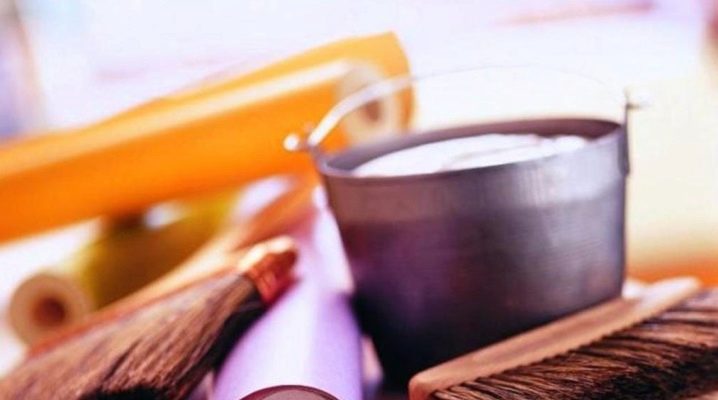
Wallpaper is a modern finishing material used for interior decoration. The quality of the surface depends not only on the characteristics, but also on their correct installation. Fixing wallpaper involves the use of special mixtures that have adhesive properties. It is important to learn how to properly dilute the glue before starting such operations.
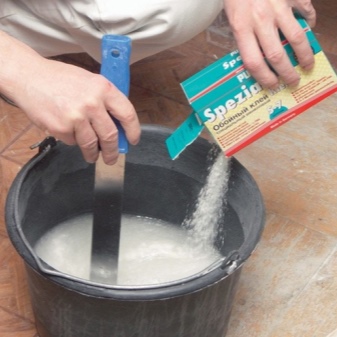
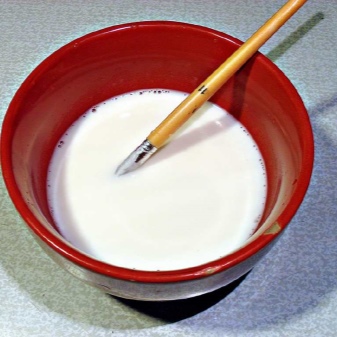
We select the mixture
Manufacturers put on the market today several types of wallpaper glue. These formulations are intended to work only on certain types of webs. Therefore, when buying, it is important to check with the seller which substances can be fixed with their help.
Depending on the type of wallpaper, the glue can be divided into several groups:
- Products for paper canvases. Indicators of adhesion of the mixture to the wall are relatively weak. Therefore, such a glue simply will not withstand cloths with a large weight.
- Solutions for heavy wallpaper. To increase the quality of adhesion, PVA is added to the product composition. These solutions can be applied to paper wallpapers, but this approach is economically disadvantageous.
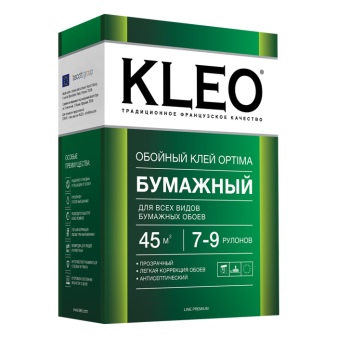
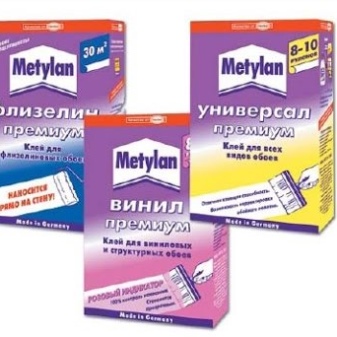
- Universal glue (for example, "Moment"). Such mixtures are designed to work with all types of wallpaper (vinyl, paper and others). But it is better not to use it, since the quality of the universal glue is not always satisfactory and does not allow you to get a better fixation than with highly specialized materials.
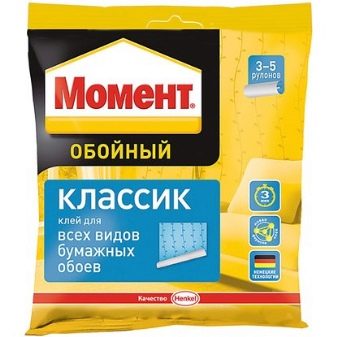
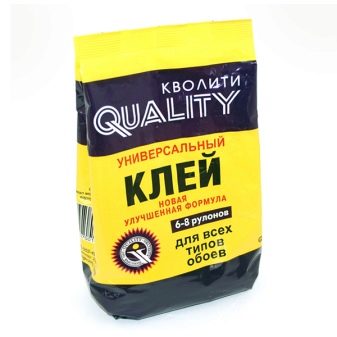
- Adhesive for glass fiber wallpaper. The composition has a dispersion structure, which makes it possible to glue even textile wallpaper or fabric-based materials with it.
- Mixtures for non-woven wallpaper. The most popular brands in this category are Methylan, Fliz, Exclusive and Quelyd. Please note that such adhesives are recommended for non-woven wallpaper. Sometimes they can be used to fix paper canvases.
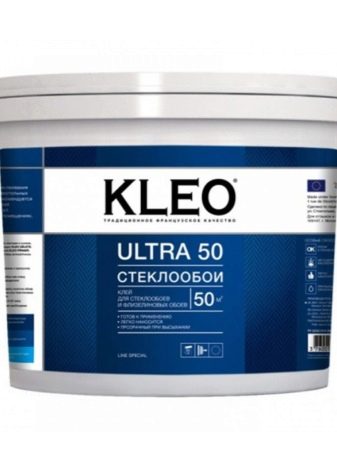
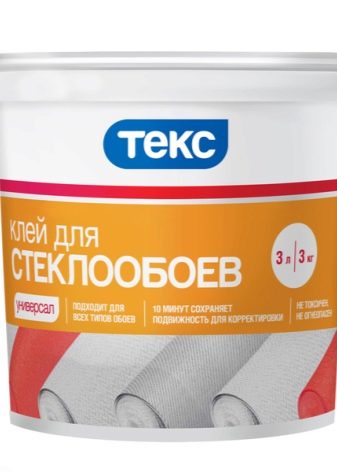
What determines the consumption of glue?
When pasting wallpaper, it is very important to purchase not only a high-quality solution, but also the right amount. Universal, specialty or non-woven adhesives have different consumptions. To find out the approximate amount of the mixture, you should evaluate several main characteristics:
- Adhesive type and manufacturer's recommendations. Each package indicates the optimal amount of the mixture per unit area. Therefore, when buying, it is important to pay attention to this indicator.
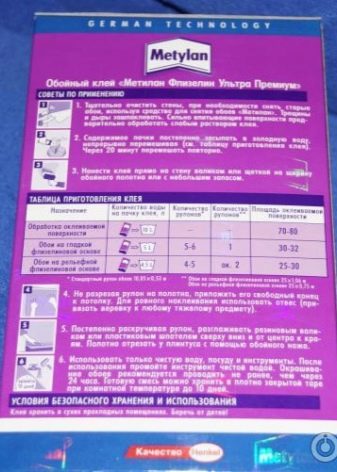

- Wallpaper material. Woven or heavy materials can absorb a significant amount of liquid, while paper requires a minimum amount.
- Wall structure. Today, many adhesives are applied to concrete walls that have little liquid absorption. Therefore, they will need a little less than, for example, on a wall made of clay, aerated block and other similar substance.
Finding the optimal glue consumption can only be done through real experiments.
Therefore, if you are not sure how much composition you need, then it is advisable to purchase products with a small margin, focusing on the manufacturer's recommendations.
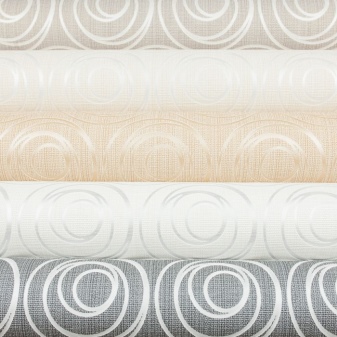
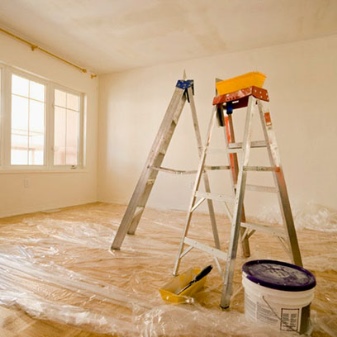
Stocking up with a tool
Glue preparation is a simple operation that does not require any special skills and abilities. But in order to get quality products, you should stock up on some auxiliary tools:
- Capacity of a certain volume. For pasting one room, a regular bucket or bowl is suitable for you. In this case, you can always quickly prepare more mixtures if it runs out.This became possible due to the fact that all solutions are rapidly dissolving and are prepared for about 5-10 minutes, depending on the manufacturer and brand.
- Mixing device. The simplest option would be a wooden stick. If the amount of the mixture is significant, then a construction mixer or a drill with a special attachment can be used.
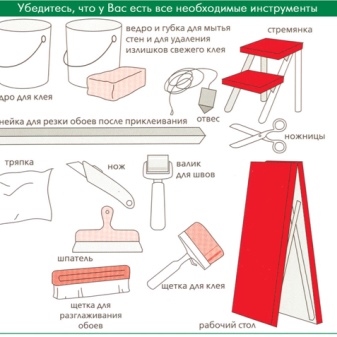

Please note that all instruments must be clean. This is important, as the ingress of dirt can adversely affect the quality of the wallpaper pasting. Therefore, try to check if there is any sand or dirt left in the bucket or mixer.
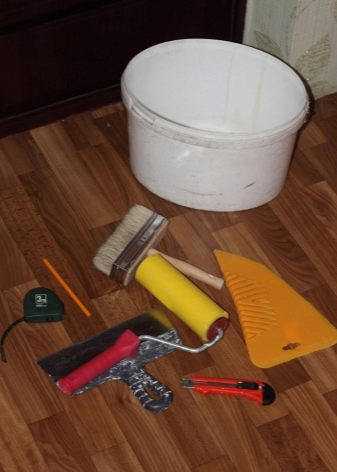
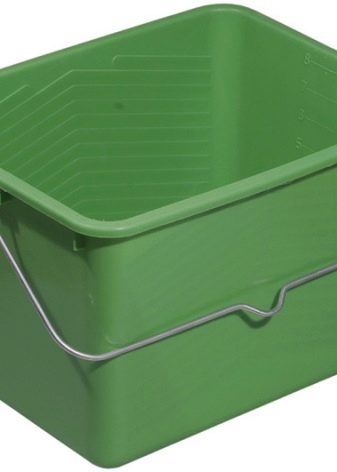
Cooking algorithm
Wallpaper glue is produced today in the form of a kind of flakes, which, when mixed with water, swell and form a mixture similar to a gel or jelly.
The glue preparation technology consists of the following sequential actions:
- First of all, you need to measure the required amount of clean water. Sometimes experts recommend using a lukewarm liquid, as the mixture can dissolve better in it.
- After that, the required volume of solution is measured. For this, it is advisable to use a measuring cup to maintain all proportions.


- Before diluting the glue with water, it is advisable to make rotational movements with a stick to make the liquid move to one side. After that, the flakes are poured into the container in small portions. At the same time, it is important to constantly rotate the stick to prevent the glue from sticking together.
- When the flakes have all dissolved and a gel has begun to form, you can stop stirring the mixture. After that, it is left for 5-15 minutes. This is necessary so that the remaining components can swell and acquire the desired consistency.
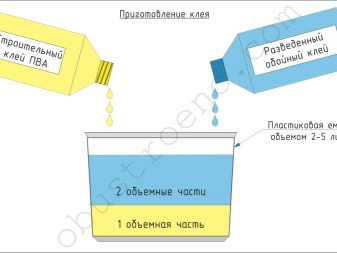
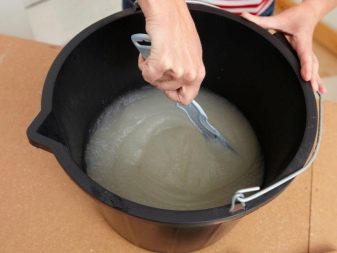
At the end of the preparation, you can apply the solution to the wallpaper or to the wall. Please note that it is not advisable to store the mixture for a long time, as it will lose its properties. Therefore, try to calculate as accurately as possible the required amount of the required volume of adhesive.
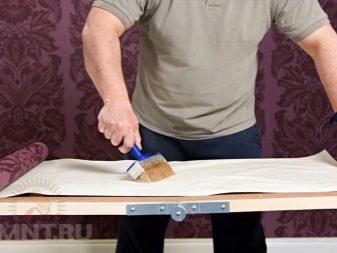

Several recommendations
Diluting wallpaper glue is a simple operation.
To get a quality mixture, it is important to follow these simple rules:
- Before mixing, be sure to read the instructions for use. It is in it that the required ratio of water and glue for mixing is indicated. Please note that for universal formulations this value may vary depending on the type of wallpaper for which they will be applied.
- To obtain strong adhesion, it is advisable to take a little less water than the manufacturer recommends. However, do not halve the dose, as this will not give a positive result.
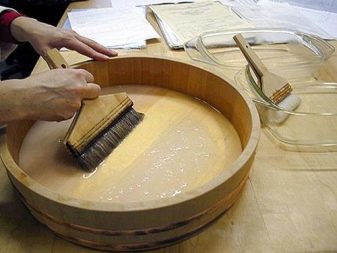
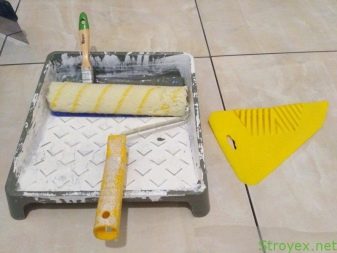
- When mixing, pour in the flakes gradually. If you place the entire volume in water at once, this will lead to the formation of a lump. After that, getting a uniform liquid is practically impossible.
- Do not add PVA to the composition, as this will not give the desired result. Well-known brands of solutions will hold the canvas well without the use of third-party impurities.
- Glue non-woven wallpaper only on a thick solution, which will allow you to get an even and durable surface.
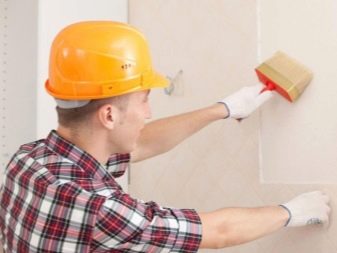
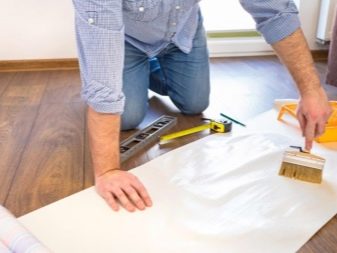
The technology for making glue is quite simple, but it requires care, as well as adherence to simple rules. If the quality of pasting is important to you, then give preference only to products of well-known brands. And, of course, be sure to carefully study the instructions on the package.
For information on how to dilute wallpaper glue, see the next video.













The comment was sent successfully.